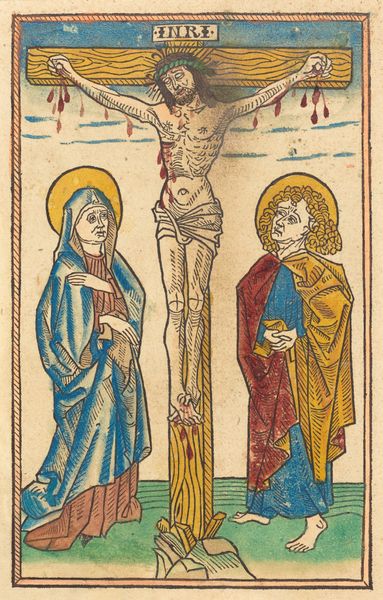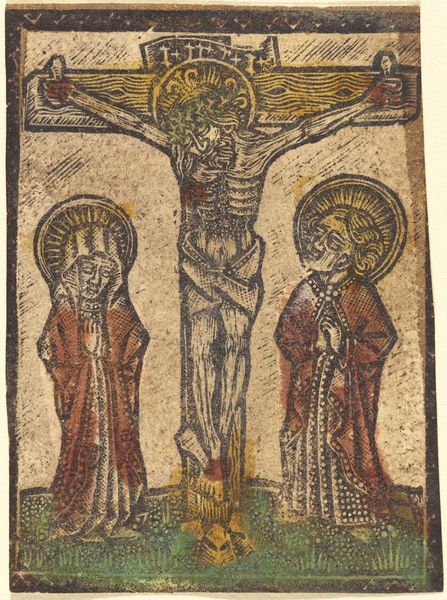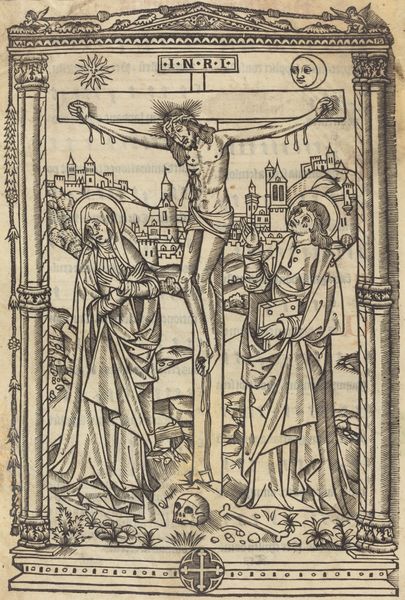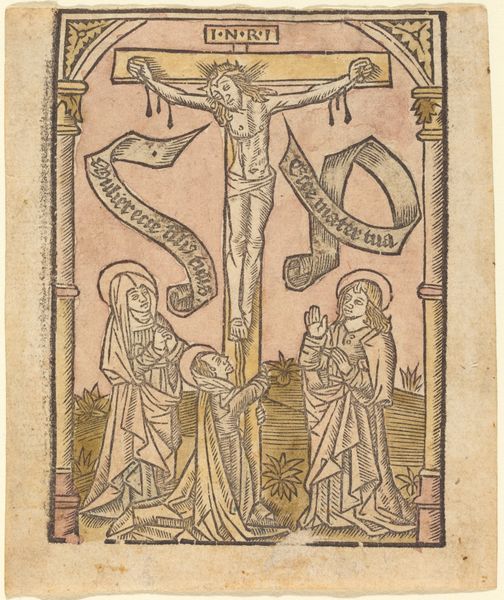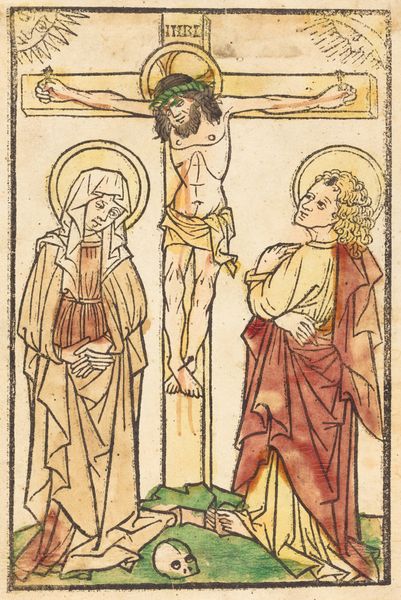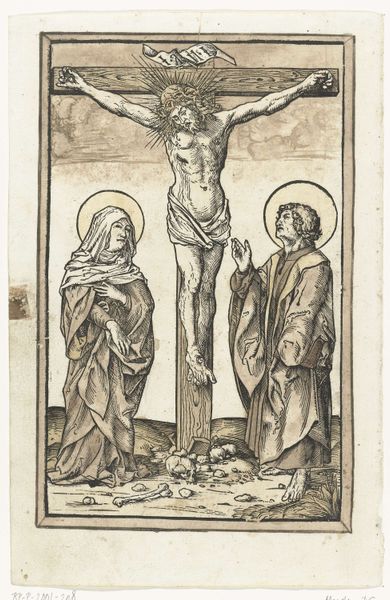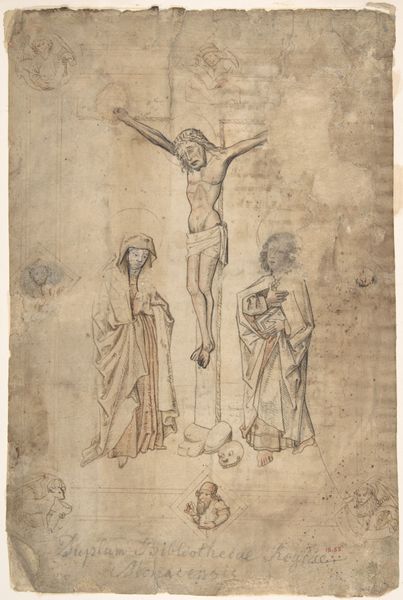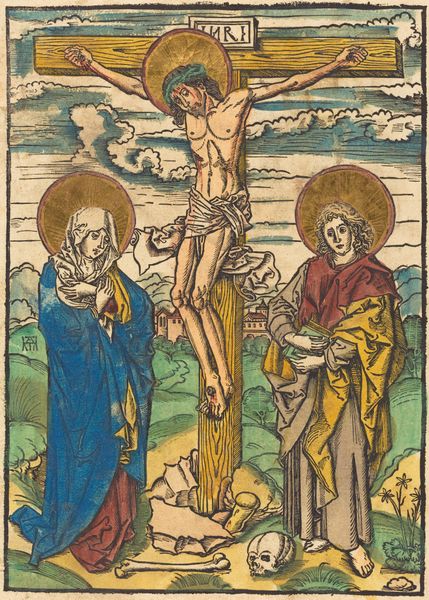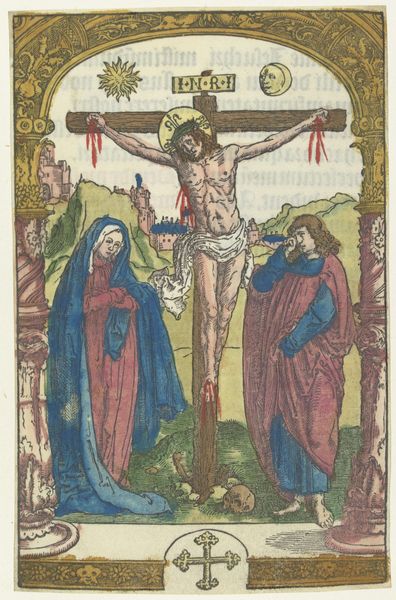
print, woodcut
#
medieval
#
narrative-art
# print
#
gothic
#
figuration
#
woodcut
#
history-painting
Copyright: National Gallery of Art: CC0 1.0
This anonymous ‘Christ on the Cross’ was made using a woodblock printmaking technique. Looking closely, the linear quality of the image speaks to the labor-intensive process of carving into a block of wood. The artist has used a limited number of marks to create the figures, but with expressive results. This was not fine art, but instead created for mass consumption: the production of images like this one was crucial in the spread of religious ideas across Europe. Printmaking allowed for the widespread distribution of images and texts, influencing popular beliefs, and shaping cultural identities. In contrast to illuminated manuscripts, which were luxury objects laboriously made by hand, woodcuts such as this one allowed for a more democratic consumption of religious imagery. Next time you encounter a print, consider the ways in which the materials and processes used in its creation have shaped not only its visual appearance, but also its wider social and cultural impact.
Comments
No comments
Be the first to comment and join the conversation on the ultimate creative platform.
